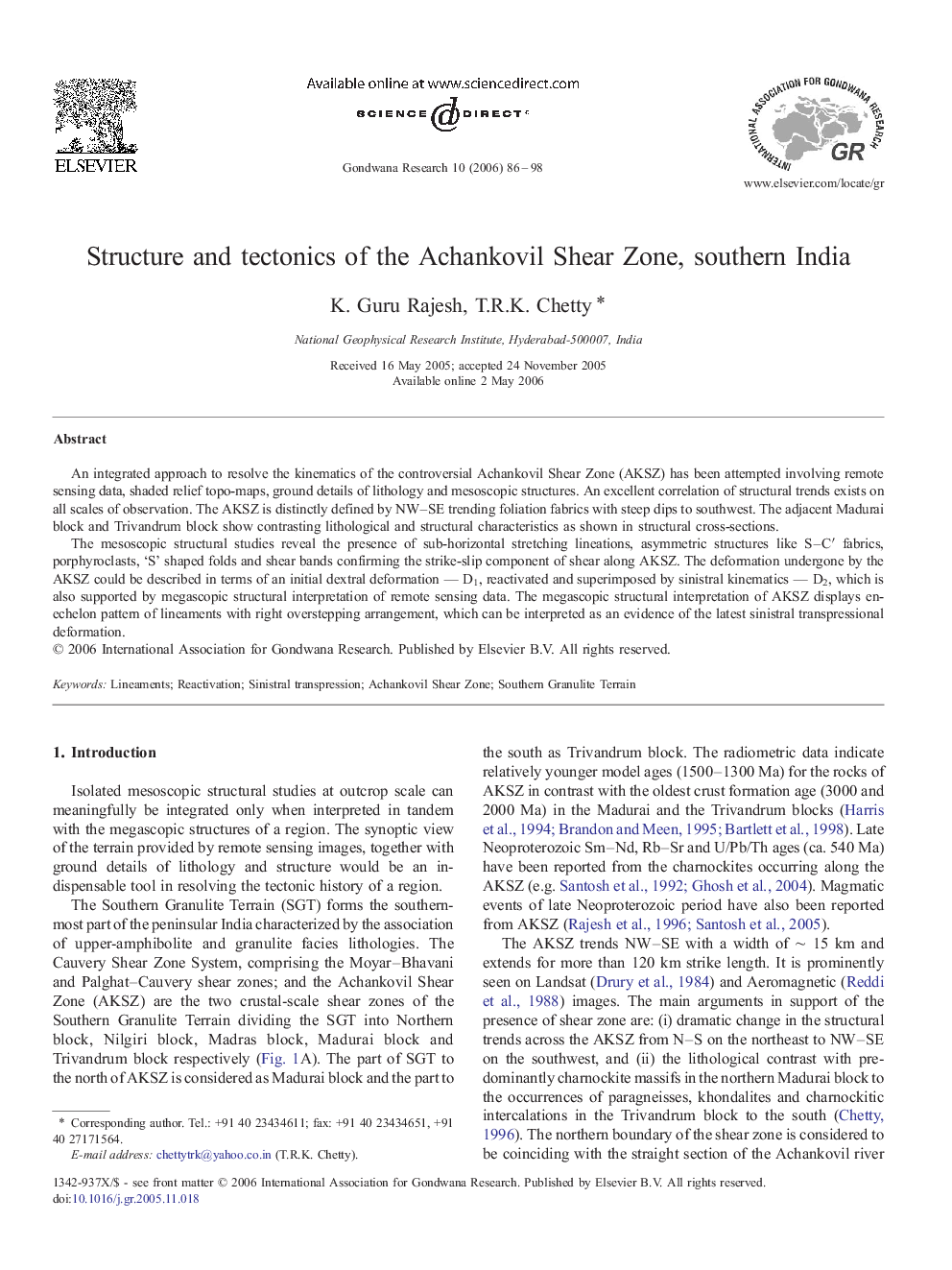| Article ID | Journal | Published Year | Pages | File Type |
|---|---|---|---|---|
| 4727909 | Gondwana Research | 2006 | 13 Pages |
An integrated approach to resolve the kinematics of the controversial Achankovil Shear Zone (AKSZ) has been attempted involving remote sensing data, shaded relief topo-maps, ground details of lithology and mesoscopic structures. An excellent correlation of structural trends exists on all scales of observation. The AKSZ is distinctly defined by NW–SE trending foliation fabrics with steep dips to southwest. The adjacent Madurai block and Trivandrum block show contrasting lithological and structural characteristics as shown in structural cross-sections.The mesoscopic structural studies reveal the presence of sub-horizontal stretching lineations, asymmetric structures like S–C′ fabrics, porphyroclasts, ‘S’ shaped folds and shear bands confirming the strike-slip component of shear along AKSZ. The deformation undergone by the AKSZ could be described in terms of an initial dextral deformation — D1, reactivated and superimposed by sinistral kinematics — D2, which is also supported by megascopic structural interpretation of remote sensing data. The megascopic structural interpretation of AKSZ displays en-echelon pattern of lineaments with right overstepping arrangement, which can be interpreted as an evidence of the latest sinistral transpressional deformation.
